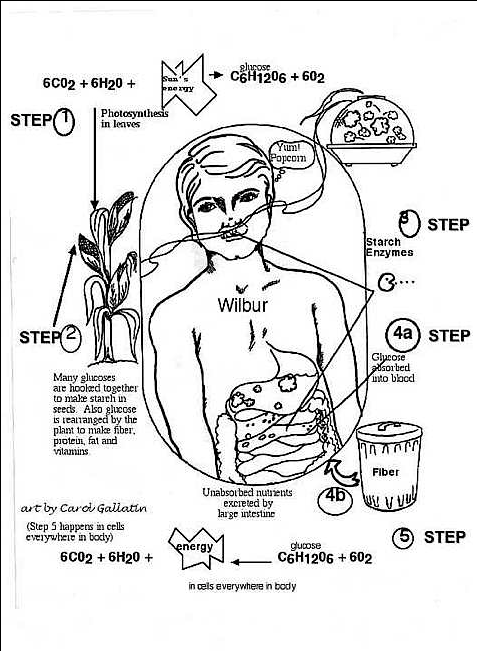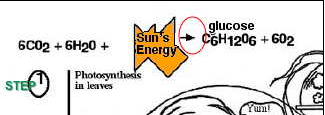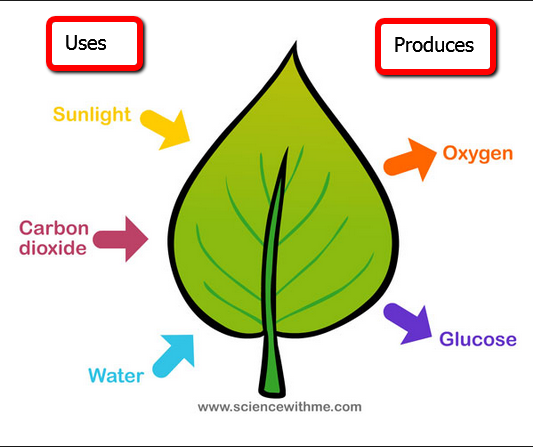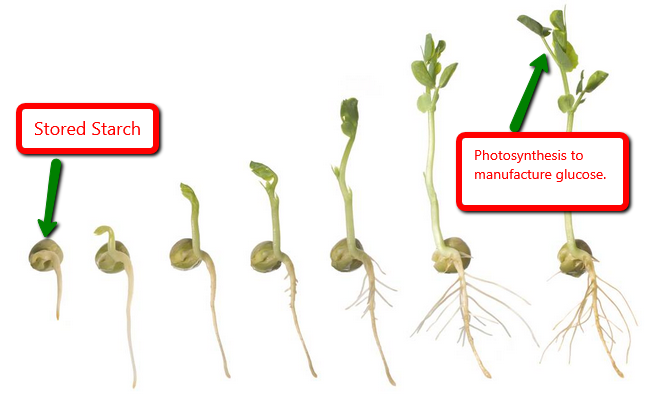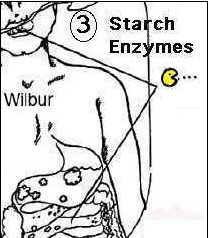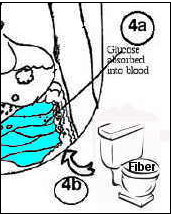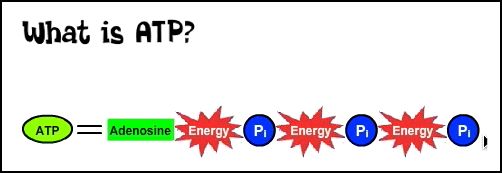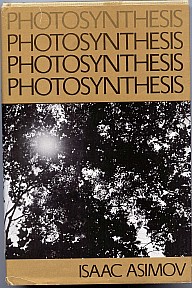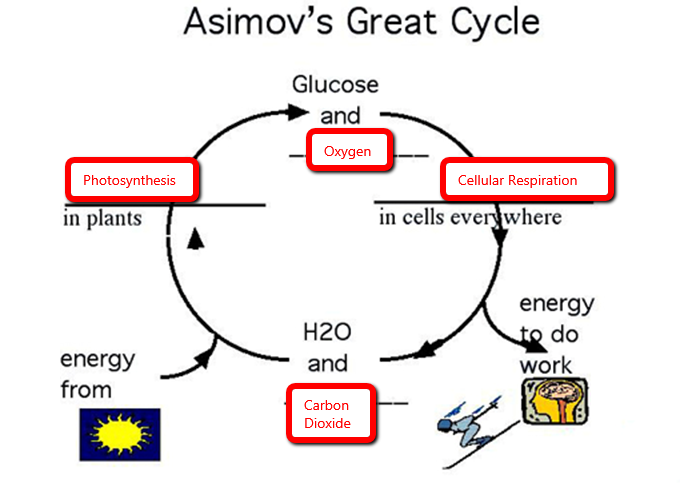Some Results from SQ 2 & 3
(LECTURE 3B follows the results.)
For which of the following nutrients was your intake
UNDER the TARGET Recommendation?
| Winter 2017 | Spring 2017 | Fall 2018 | Winter 2018 | Spring 2019 | Fall 2019 | |
| Protein | 10% | 13% | 13% | 30% | 26% | 28% |
| Total Fiber | 66% | 54% | 57% | 56% | 62% | 51% |
| Saturated Fat | 3% | 0% | 3% | 36% | 45% | 32% |
| Vitamin E | 68% | 61% | 55% | 55% | 66% | 56% |
| Vitamin B6 | 24% | 17% | 17% | 47% | 45% | 43% |
| Vitamin B12 | 27% | 26% | 22% | 42% | 43% | 40% |
| Calcium | 65% | 59% | 65% | 63% | 69% | 61% |
| Magnesium | 65% | 63% | 62% | 64% | 73% | 60% |
| Iron | 68% | 56% | 63% | 55% | 52% | 56% |
| Zinc | 39% | 35% | 28% | 58% | 64% | 57% |
| Selenium | 10% | 7% | 10% | 11% | 16% | 3% |
| Potassium | 85% | 80% | 82% | 67% | 72% | 61% |
| Vitamin D | 73% | 74% | 60% | 69% | 74% | 58% |
| None of the above. I was above my “Recommendation or Acceptable Range” for all nutrients. |
0% | 4% | 2% | 0% | 2% | 7% |
Which groups were you
UNDER the target recommendation? (Select all that apply.)
| Winter 2017 | Spring 2017 | Fall 2018 | Winter 2018 | Spring 2019 | Fall 2019 | |
| Grains | 71% | 61% | 68% | 55% | 53% | 58% |
| Vegetables | 74% | 59% | 55% | 55% | 76% | 49% |
| Fruits | 58% | 44% | 57% | 63% | 72% | 65% |
| Dairy | 73% | 65% | 67% | 70% | 74% | 68% |
| Protein Foods | 34% | 39% | 43% | 39% | 48% | 30% |
| None of the above. I was above
my target recommendation for all groups. |
2% | 6% | 2% | 0% | 5% | 7% |
|
FN 225:
Nutrition
LECTURE 3B: Wilbur and Solar PowerTamberly Powell, M.S., R.D. Health Professions Division Lane Community College Eugene, Oregon |
The Lectures NEXT week (Week 4) are longer than usual, so please plan your time for next week accordingly. FORUM: 1. Looking at the above results from the diet analysis project, students reported being low in most food groups (except protein). Pick a food group that you would like to improve upon. What small step can you take to improve your intake of this food group? 2. Over half of the class reported not eating enough of grains. We will be discussing the importance of whole grains next week. Check out the following resource, Tips to Help You Eat Whole Grains. Of the tips discussed which do you currently practice? Do you have any tips you can add to this list to incorporate whole grains into your meals and/or snacks? Are there any grains listed that are new to you that you would like to try to incorporate into your meals? 3. The last two weeks you kept track of
what you ate and drank for three days and then entered those foods into
a diet analysis program. The overall goal of
this assignment is to compare your nutrient intake with the
recommendations we will be discussing throughout the course (like the
DRIs and MyPlate). Lecture
Step 1: PHOTOSYNTHESIS
All of us are solar powered machines, but we just can't lay in the sun and absorb this energy. The sun's energy has to be turned into a fuel that our body can use, that our cells can use to fuel their work. Plants turn solar energy into a form of energy that we (and the plant) can use by a process called photosynthesis. With photosynthesis plants manufacture glucose, converting solar energy into chemical energy. The sun's energy is actually captured in the chemical bonds of glucose. Photosynthesis takes place in the leaves of the plant.
As the Wilbur Drawing says, the formula for photosynthesis is 6CO2 +
6H2O + sun’s energy = C6H12O6 +
6O2 Below is an illustration of what photosynthesis uses and produces.
Glucose as illustrated below is a monosaccharide (single sugar). It is the simplest form of carbohydrate, and also the most prevalent carbohydrate both in food and in the body. Can you see what elements make up glucose? Carbon, hydrogen and oxygen are the elements that make up glucose. Remember these elements came from carbon dioxide and water during photosynthesis. Carbohydrate literally means "hydrated carbon". The chemical abbreviation for carbohydrate (CHO) indicates the atoms it contains: carbon, hydrogen, and oxygen.
Glucose is important for both humans and plants. They both use glucose as an energy source. Glucose is particularly important to the human body because it is one of the main fuel sources for the brain. Most cells (like muscles) can use a mixture of fuels (glucose, fat, protein), but the brain typically will rely solely on glucose for fuel. There are exceptions and we will discuss this in future weeks. Below is a silly little video about the process of photosynthesis. Be careful the music can be catching. If you want more depth on the process of photosynthesis, you can watch the Khan video that is posted under the Supplementary Instructional Videos in Week 3 of moodle.
Here is a link to the above video:
https://www.youtube.com/watch?v=C1_uez5WX1o
Step 2: PLANTS STORE
GLUCOSE AS STARCH
Glucose is important to plants for many reasons. Just like humans, plants use glucose as an energy source. Plants can also store glucose as starch in seeds for an energy reserve. Starch is a polysaccharide (many sugars) made from the simple sugar, glucose. Starch can be composed of hundreds to thousands of glucose molecules combined through covalent bonds. 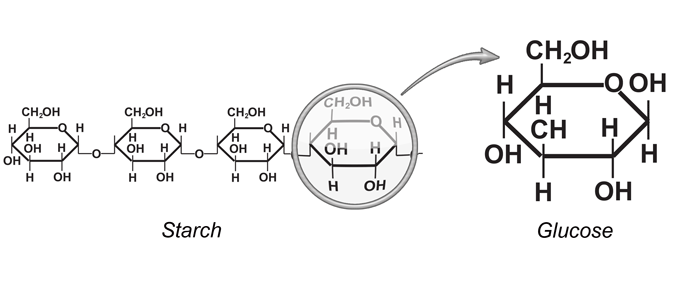
The plant stores this starch in seeds, like seen below in
the corn plant. This stored starch will serve as an energy source
for the plant to reproduce. When the seed is buried deep in the
soil, this starch can be broken down into glucose to be used for energy
for the seed to sprout.
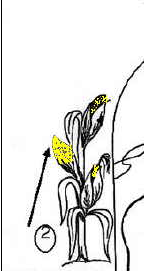
Below you can see that the seed on the left hand side must be using stored starch for an energy source to grow (there are no leaves for photosynthesis to occur). The sprouted plant on the right (that does contain leaves) can photosynthesize and use glucose as an energy source to grow.
Above it mentions that plants use glucose to make other nutrients like fiber, protein, fat,a nd vitamins. Where does the plant get the minerals it needs? Click here if you think the plant makes the minerals. Click here if you think the plant gets the minerals from the soil. Now you should have an idea of where we find starch in foods. In foods that are seeds or that are made from seeds. You can also find starch in tubers like potatoes. There is starch stored here also for reproduction purposes. If you have ever left a potato out in the light you will notice that it starts to form buds and sprouts. This week in the forums we will discuss the types of foods that contain starch.
When we eat foods that contain starch like popcorn, we must enzymatically digest the starch down into glucose in order for glucose to be absorbed and utilized as an energy source by cells.
As the popcorn is popping and Wilbur is taking in the aromas his body is preparing for digestion. His mouth starts salivating and this is where digestion of starch will begin with salivary amylase. From chapter 3 you might remember that enzymes end in "ase" and they are named after nutrients they help breakdown. Another word for starch is amylose, hence the enzyme name, amylase. Starch digestion will continue in the small intestine when the pancreas secretes pancreatic amylase. Both amylase enzymes break down starch into maltose. Then maltase is needed to breakdown maltose into glucose which happens on the surface of intestinal cells. Once starch is enzymatically digested down into glucose, glucose can be absorbed into the intestinal cells where glucose enters the bloodstream and is transported to cells. To review, starch digestion begins in the mouth, and ends in the small intestine. The three enzymes involved in enzymatic digestion of starch are: salivary amylase, pancreatic amylase, and maltase. Glucose is absorbed after enzymatic digestion of starch. The animation below illustrates the digestion process of starch. Digestion and Absorption of Carbohydrates Animation. Keep in mind that when you eat a whole plant food like popcorn, there will be many nutrients that need to be digested and absorbed. Popcorn would also contain fat, protein, vitamins and minerals. However, this illustration is just focusing on starch. The components that escape digestion, like fiber (found in all whole plant foods), would be excreted as waste. Fiber is not enzymatically digested. Our body does not make the enzymes needed to breakdown fiber.
Step 5: CELLULAR RESPIRATION
When glucose is transported to cells through the blood stream, glucose enters cells where it can be broken down for energy, in a complex process called cellular respiration. This happens within all cells all over the body. It also happens in plant cells. The chemical equation above is illustrating what is used in cellular respiration, and what is produced. Keep in mind this is not a one step reaction. Cellular respiration is a complex series of reactions that involve many steps, enzymes and coenzymes. We will go into more depth of this process in later chapters (you can also watch the Khan Video that is posted under Supplementary Instructional Videos in Week 3 of Moodle). For now I want you to know what cellular respiration uses (glucose and oxygen) and what cellular respiration produces (carbon dioxide, water, and energy in the form of ATP). Below is another way to illustrate that chemical reaction. On the left hand side of the arrow is what is used in cellular respiration, glucose and oxygen. On the right hand side of the arrow is what is produced, carbon dioxide, water, and energy (ATP).
The purpose of cellular respiration is to release the energy in the chemical bonds of glucose (that the plant put there through photosynthesis) and to capture that energy in a more usable form that cells can use. ATP, or Adenosine Triphosphate is the energy currency of the cell. As illustrated below, ATP is an adenosine molecule with three high energy phosphate bonds.
Don't get too caught up in the details here. Keep the big picture in mind which is glucose is getting turned into a usable energy source for cells. I also want you to know the relationship between photosynthesis and cellular respiration. Can you see that photosynthesis and cellular respiration are opposite chemical reactions? What one uses the other produces, and what one produces the other uses. Isaac Asimov described this process beautifully in a 1968 book.
Asimov's Great Cycle shown below illustrates this relationship.
|
